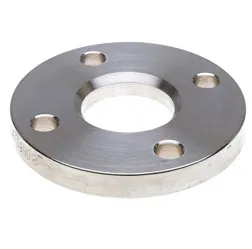-
Cangzhou Yulong Steel Co., Ltd.
-
Phone:
+86 13303177267 -
Email:
admin@ylsteelfittings.com
- English
- Arabic
- Italian
- Spanish
- Portuguese
- German
- kazakh
- Persian
- Greek
- French
- Russian
- Polish
- Thai
- Indonesian
- Vietnamese
- Zulu
- Korean
- Uzbek
- Hindi
- Serbian
- Malay
- Ukrainian
- Gujarati
- Haitian Creole
- hausa
- hawaiian
- Hebrew
- Miao
- Hungarian
- Icelandic
- igbo
- irish
- Japanese
- Javanese
- Kannada
- Khmer
- Rwandese
- Afrikaans
- Albanian
- Amharic
- Armenian
- Azerbaijani
- Basque
- Belarusian
- Bengali
- Bosnian
- Bulgarian
- Catalan
- Cebuano
- China
- China (Taiwan)
- Corsican
- Croatian
- Czech
- Danish
- Esperanto
- Estonian
- Finnish
- Frisian
- Galician
- Georgian
- Kurdish
- Kyrgyz
- Lao
- Latin
- Latvian
- Lithuanian
- Luxembourgish
- Macedonian
- Malgashi
- Malayalam
- Maltese
- Maori
- Marathi
- Mongolian
- Myanmar
- Nepali
- Norwegian
- Norwegian
- Occitan
- Pashto
- Dutch
- Punjabi
- Romanian
- Samoan
- Scottish Gaelic
- Sesotho
- Shona
- Sindhi
- Sinhala
- Slovak
- Slovenian
- Somali
- Sundanese
- Swahili
- Swedish
- Tagalog
- Tajik
- Tamil
- Tatar
- Telugu
- Turkish
- Turkmen
- Urdu
- Uighur
- Welsh
- Bantu
- Yiddish
- Yoruba

Nov . 02, 2024 18:07 Back to list
flanged pipe fittings
Understanding Flanged Pipe Fittings A Comprehensive Overview
Flanged pipe fittings are crucial components in plumbing and piping systems, providing a secure and leak-proof connection between various sections of piping or equipment. These fittings are characterized by their flat, disc-like edges that are designed to be bolted together, creating a strong and reliable joint. This article delves into the significance, types, and applications of flanged pipe fittings.
The Importance of Flanged Pipe Fittings
Flanged pipe fittings play a vital role in a wide range of industries, including oil and gas, water treatment, chemical processing, and HVAC systems. Their primary function is to facilitate easy assembly and disassembly of pipe systems, which is essential for maintenance and repair work. By using flanged connections, technicians can quickly disconnect pipelines without having to cut or weld, thereby minimizing downtime and operational disruptions.
Types of Flanged Pipe Fittings
Flanged fittings come in several types, each tailored to meet specific application needs. Some of the most common types include
1. Slip-on Flanges These are designed to slip over the pipe, allowing for easy alignment. They are often welded to the pipe on both inner and outer edges.
2. Weld Neck Flanges Featuring a long neck that gradually transitions to the flange, these fittings are used in high-pressure applications. They provide a strong joint and are heavily relied upon in sectors like oil and gas.
3. Blind Flanges Used to seal the end of a piping system, blind flanges prevent the flow of liquids or gases in a pipeline. They are essential for system testing and maintenance.
flanged pipe fittings

4. Socket Weld Flanges These fittings are designed to be inserted into the flange, allowing for a smoother flow and a strong, permanent connection through welding.
5. Lap Joint Flanges Typically used with a stub end, these flanges allow for easy alignment and disassembly, making them ideal for applications requiring frequent maintenance.
Material Selection
Flanged pipe fittings are available in various materials, including carbon steel, stainless steel, ductile iron, and plastic. The choice of material is critical, as it must align with the specific application requirements, such as temperature, pressure, and the type of fluid being transported. For example, stainless steel flanges are favored in corrosive environments due to their resistance to oxidation and corrosion.
Applications in Various Industries
Flanged pipe fittings are omnipresent in many industries. In water treatment facilities, they connect large pipelines to filtration systems. In chemical plants, these fittings withstand high temperatures and pressures, ensuring the safety and integrity of the system. The oil and gas sector employs flanged fittings extensively for sub-sea pipelines and onshore processing facilities, where robust and reliable connections are paramount.
Conclusion
In summary, flanged pipe fittings are indispensable in modern piping systems. Their ability to provide strong, leak-proof connections and facilitate easy maintenance makes them a preferred choice across various industries. Understanding the different types and applications of these fittings ensures that engineers and technicians can select the appropriate options for their specific needs, ultimately enhancing the efficiency and safety of piping operations. As industries continue to evolve, the importance of reliable and durable connections, such as those provided by flanged pipe fittings, will only grow.
Latest news
-
ANSI 150P SS304 SO FLANGE
NewsFeb.14,2025
-
ASTM A333GR6 STEEL PIPE
NewsJan.20,2025
-
ANSI B16.5 WELDING NECK FLANGE
NewsJan.15,2026
-
ANSI B16.5 SLIP-ON FLANGE
NewsApr.19,2024
-
SABS 1123 FLANGE
NewsJan.15,2025
-
DIN86044 PLATE FLANGE
NewsApr.19,2024
-
DIN2527 BLIND FLANGE
NewsApr.12,2024
-
JIS B2311 Butt-Welding Fittings LR/SR 45°/90° /180°Seamless/Weld
NewsApr.23,2024











